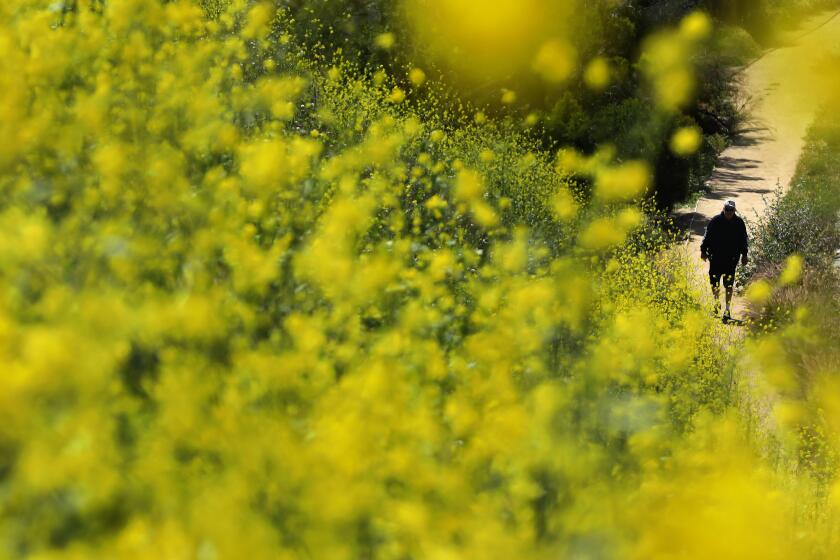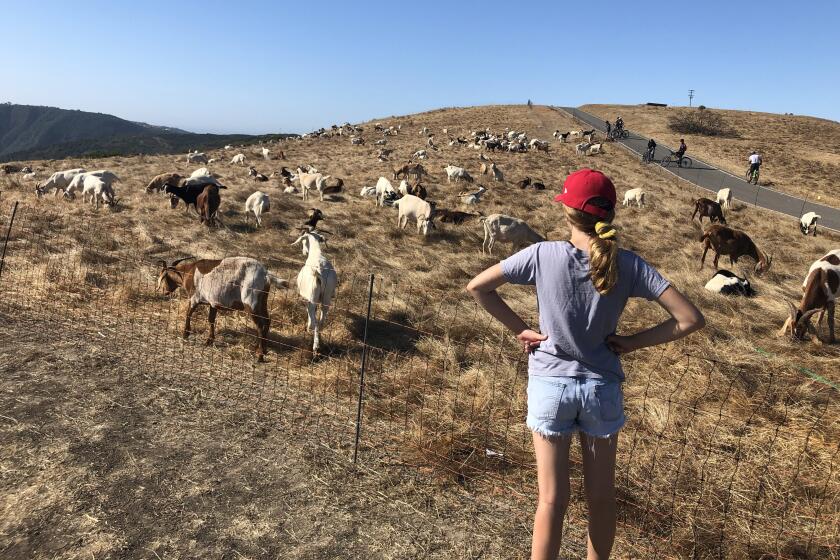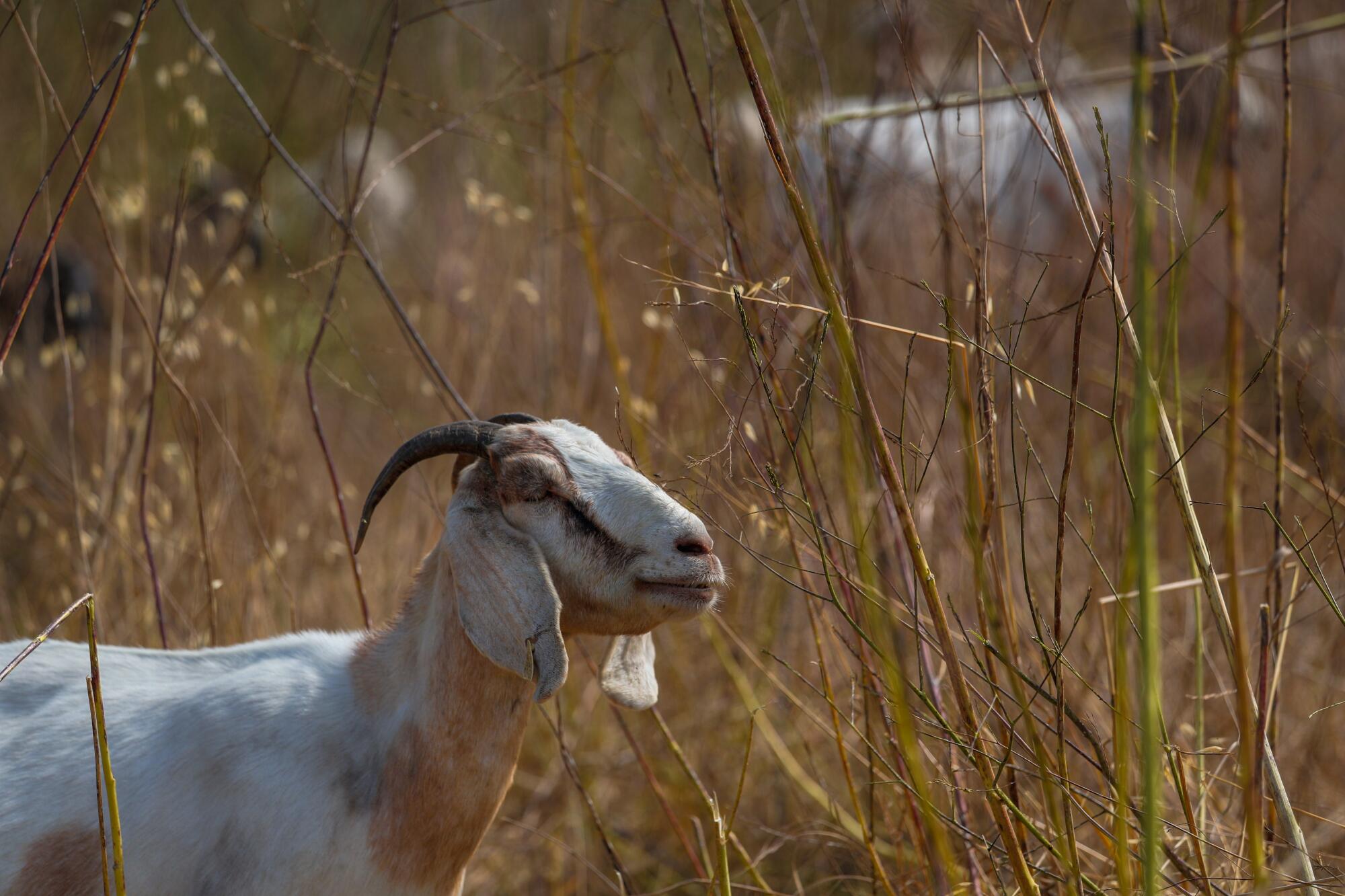
- Share via
When it comes to wildfire control, you’ve gotta love goats.
Machines may be cheaper at clearing open spaces by tilling flammable weeds — and all their seeds — into the ground, but they’re also noisy and polluting, damaging soil structure and the beneficial bugs and organisms that dwell underground.
Goats, on the other hand, are relatively quiet — save the occasional bleating and bell tinkling — and can easily access steep hills and canyons that machines would not be able to manage, said Cris Sarabia, conservation director of the Palos Verdes Peninsula Land Conservancy.
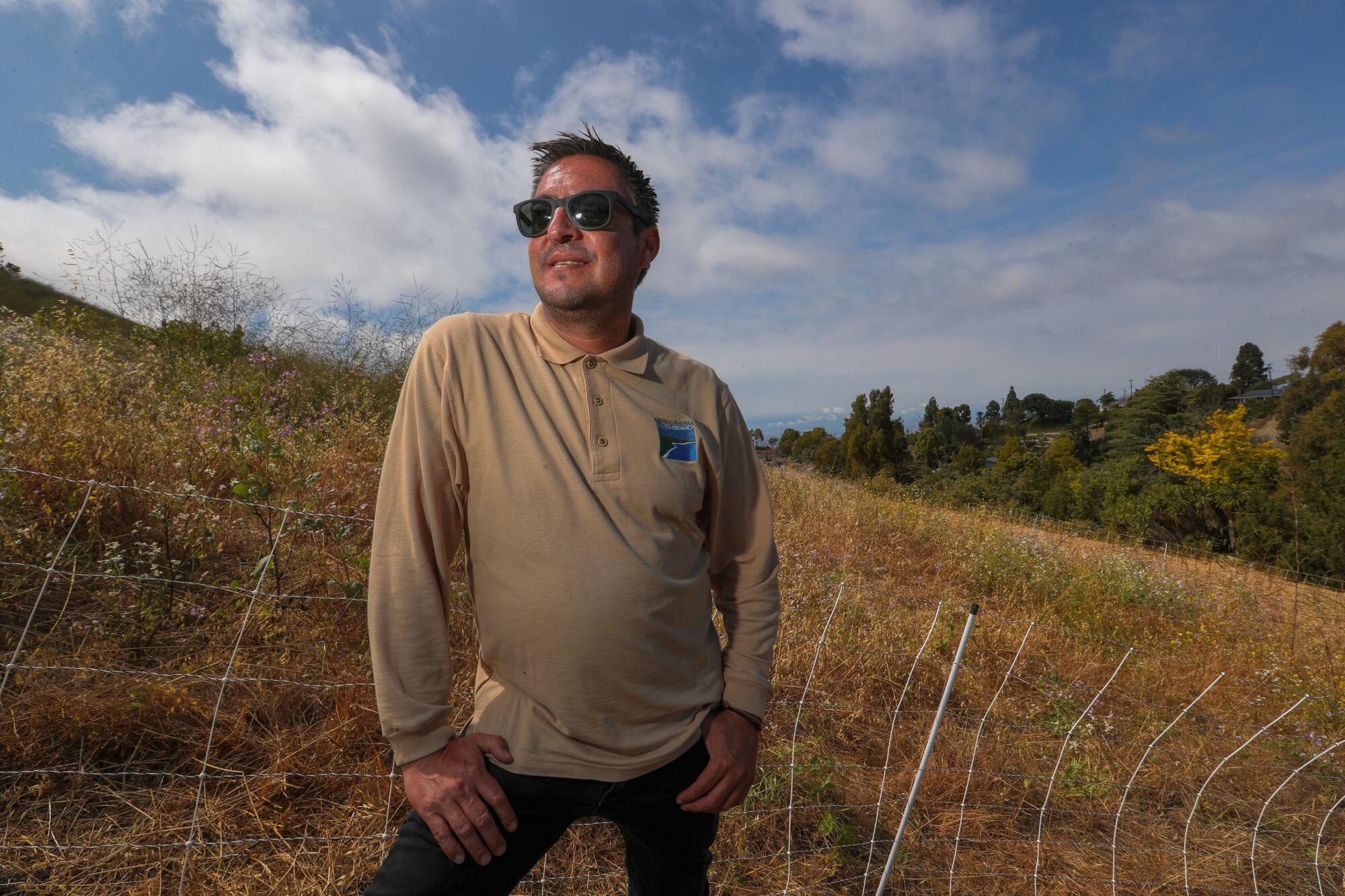
They’re also voracious and highly efficient at eating almost every plant and seed in their path, leaving only a crunchy mulch of stripped stems and piles of natural fertilizer — poop — that enrich the soil, an important consideration when, like Sarabia, you’re in the business of habitat restoration.
Goats are just about the best when it comes to clearing large swaths of weeds on steep terrain, said Michael Choi, co-owner of the Mariposa-based herding company Fire Grazers Inc. Sheep are pickier eaters, he said, “and if you tried to put a cow in this canyon, it might start rolling down the hill. Goats are natural mountaineers.”
Plus, these nimble, four-footed firefighters are super adorable and fun to watch. “Some people say it’s therapeutic,” Choi said. “They take a break every day to come out and just stare at the goats to calm down. They are very restful creatures.”

This day in early June we’re standing on a steep hill in Malaga Canyon, open space owned by the city of Rancho Palos Verdes that’s part of the Palos Verdes Nature Preserve. The city has hired Choi to clear the area of weeds, and he has two herds of about 300 goats each working at either end of the canyon, which is bordered by spacious homes.
Plants like Sahara or black mustard, common in Southern California but not native to it, can strangle native flowers and pose fire danger.
The herd nearest us has only been grazing a day, and already it’s denuded half of the eastern canyon, which was thick with invasive wild radish and black mustard plants over 5 feet tall. Choi figures they’ll clear the entire canyon in less than four days.
Choi’s job isn’t relaxing. Before his brood can graze, he and his herders have to roll out soft-wired electric fences powered by batteries to keep the goats from wandering into nearby streets or yards. They have to make sure the goats have ample water, minerals and salts and keep moving those fences as the herd moves to new pastures.
Choi’s huge Anatolian shepherd dogs, Trinity and Buster, guard their herds from predators day and night. But these goats are escape artists who are always trying to find tastier pastures, Choi said, so he has to keep a sharp eye, dispatching his border collie, Bernie, to round up stragglers and adventurers.

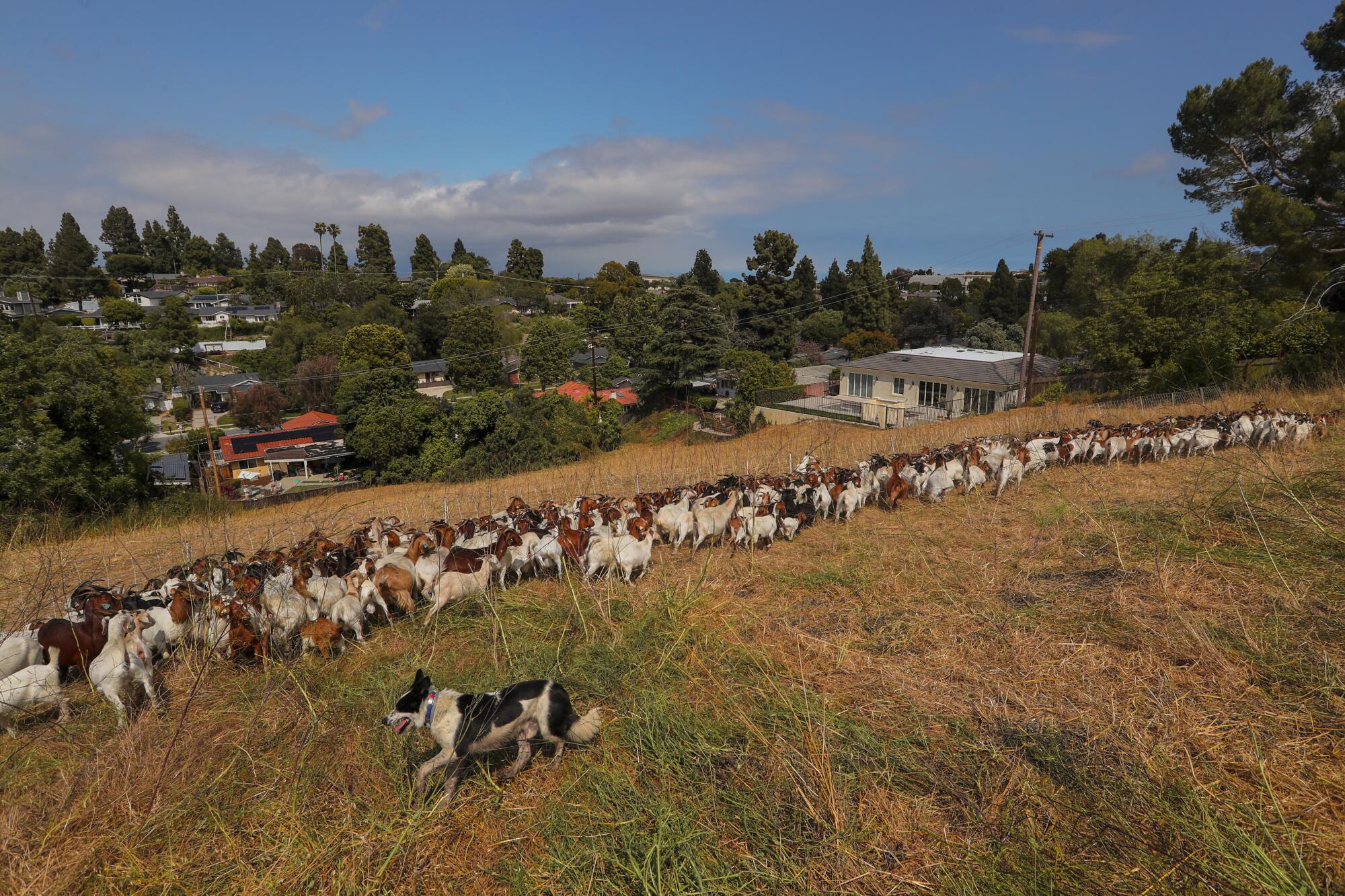
Generally, the goats prefer to stick together in large groups, and feel vulnerable when they’re alone.
It might be doable to have a few roaming your property, he said, “but you’d need to commit [to watching them]. You can’t just let them out there and say, ‘Be free,’ because then they get into your neighbor’s yard and it’s a liability issue, which is my nightmare.”
His family-owned business requires a minimum of five acres at a cost of about $1,000 to $1,500 an acre to keep a herd busy. And that’s paying around $4,000 a month to his herders now. As more municipalities and organizations hire goats to help with fire suppression, a debate is heating up in Sacramento over state rule changes that would require goat herders to be paid at an hourly rate, plus overtime, versus the current minimum monthly wage. Choi says that would more than triple what he currently pays, and “would be the end of goat herding in California.” But labor advocates say goat herders, who are expected to manage herds 24/7, should get a bigger share of revenues.
California wildfire prevention is at risk after new labor requirements separated goat herders from sheep. Goats are an economical and sustainable method of clearing underbrush.
On this sunny day, however, the goats are streaming down the hill to a new grazing area, egged on by the indefatigable herding dog Bernie. Choi holds down the soft electric fence so our group can get closer, shouting at Bernie to “Lay down!” so the goats will settle. Bernie immediately goes into a crouch, but even then he is pure energy, trembling as he waits for Choi’s next command.
Meanwhile, Sarabia scoops up a baby billy goat and cradles him in his arms. He’s unashamedly besotted by this sweet, tiny-horned creature. It’s a persuasive representative for the conservancy’s Adopt-a-Goat program, one of its many fundraising projects to support its work restoring habitat on the 1,400-acre Palos Verdes Nature Preserve to rebuild threatened species like the western monarch and Palos Verdes blue butterflies.
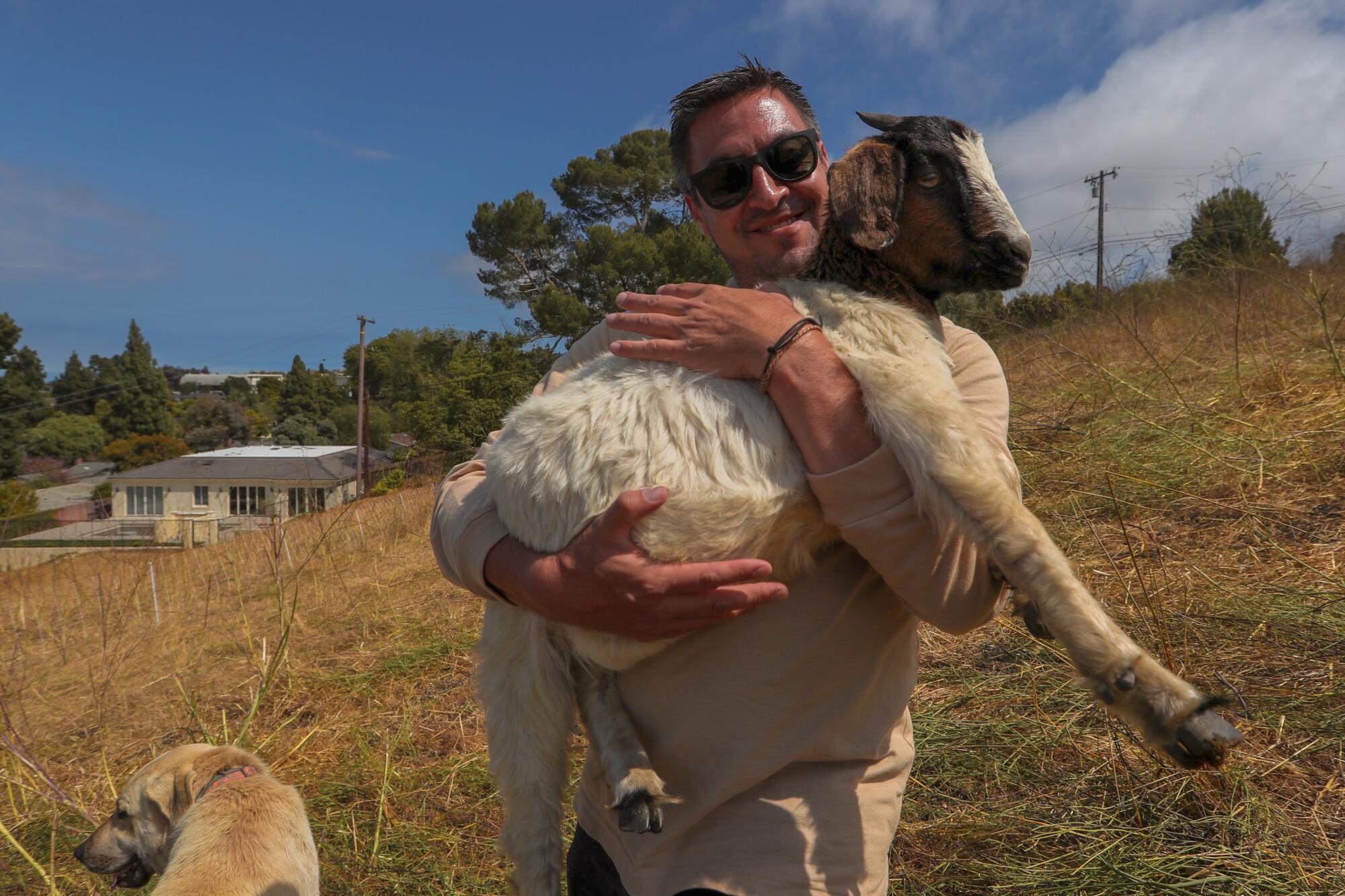
Jana Johnson rebuilt her shattered life by thinking differently and nursing the nearly extinct Palos Verdes blue butterfly back from the brink.
The goats aren’t just clearing the land of weeds, Sarabia said. They’re also preparing certain parts of the preserve for habitat restoration projects later this year. The conservancy used grant money to clear more than 13 acres in Lunada Canyon, where it hopes to gather volunteers this fall to plant deerweed (Lotus scoparius) and other native plants to restore habitat in the canyon for threatened birds and pollinators.
These restoration projects are popular and the opportunities fill up quickly, so if you’re interested, visit the conservancy’s calendar for volunteers to find out early about upcoming events. And if you live on the peninsula and want to help restore habitat in your yard, order a few plants native to the peninsula from the conservancy’s native plant nursery.
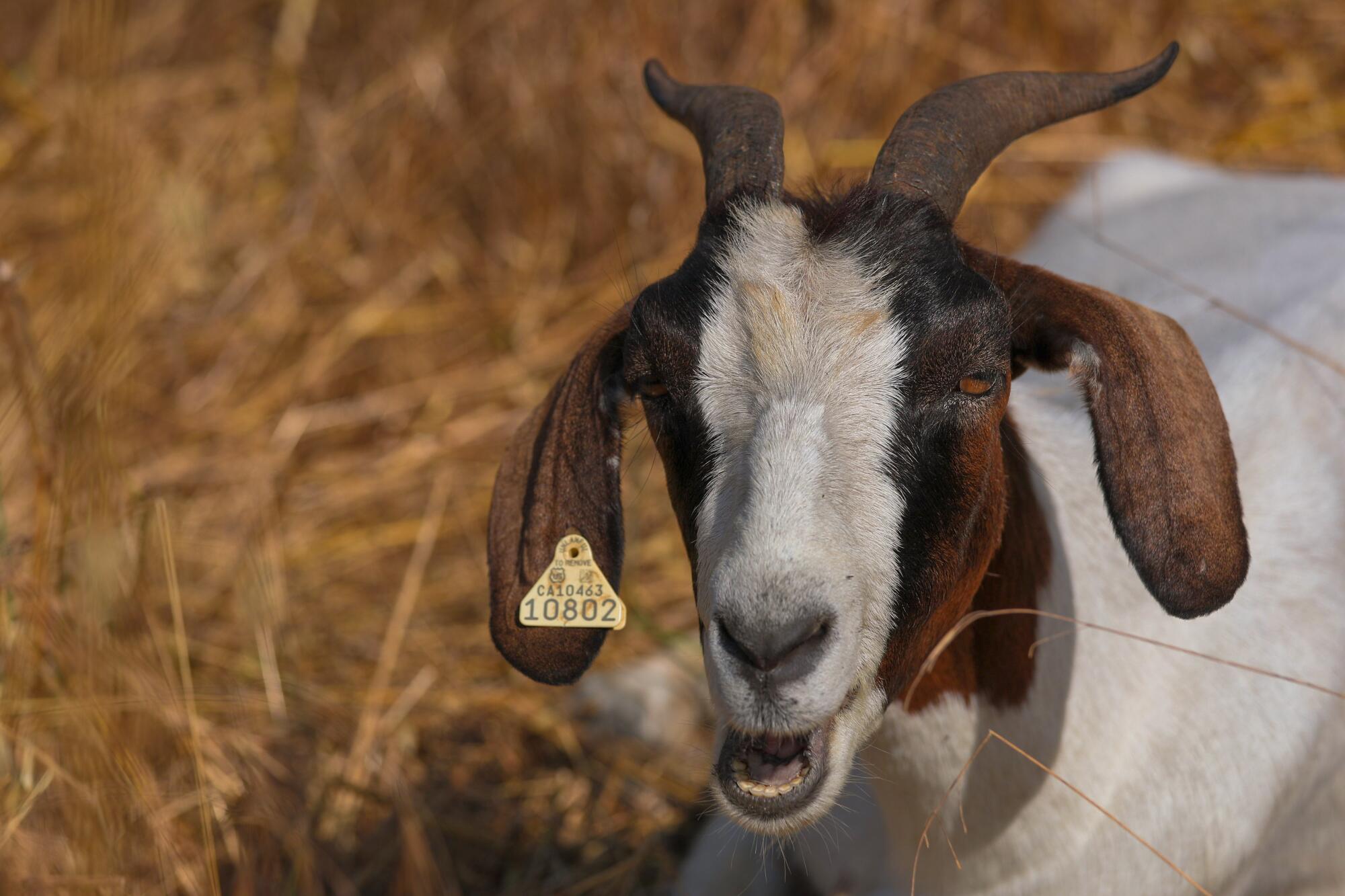
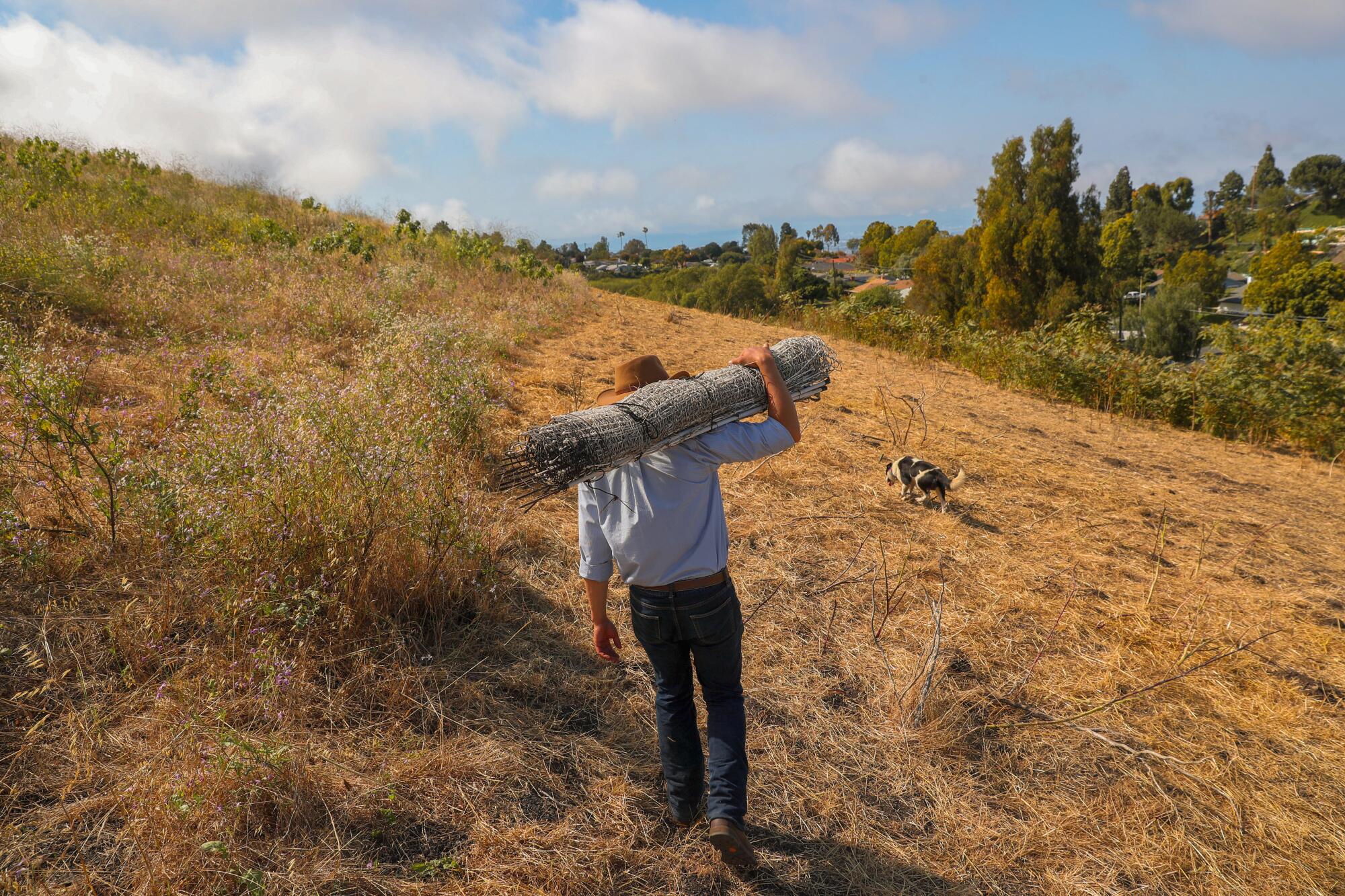
More to Read
Sign up for The Wild
We’ll help you find the best places to hike, bike and run, as well as the perfect silent spots for meditation and yoga.
You may occasionally receive promotional content from the Los Angeles Times.
